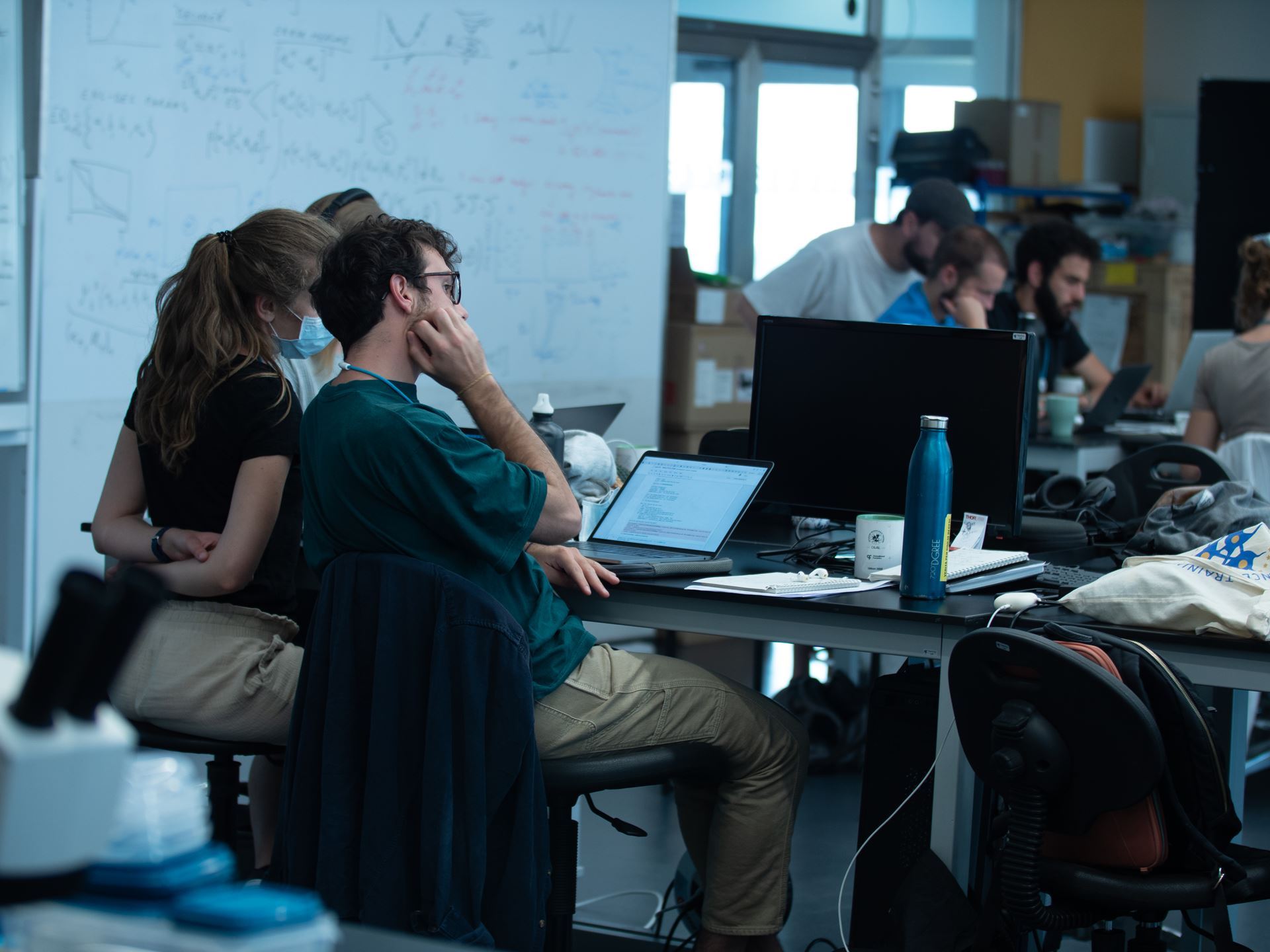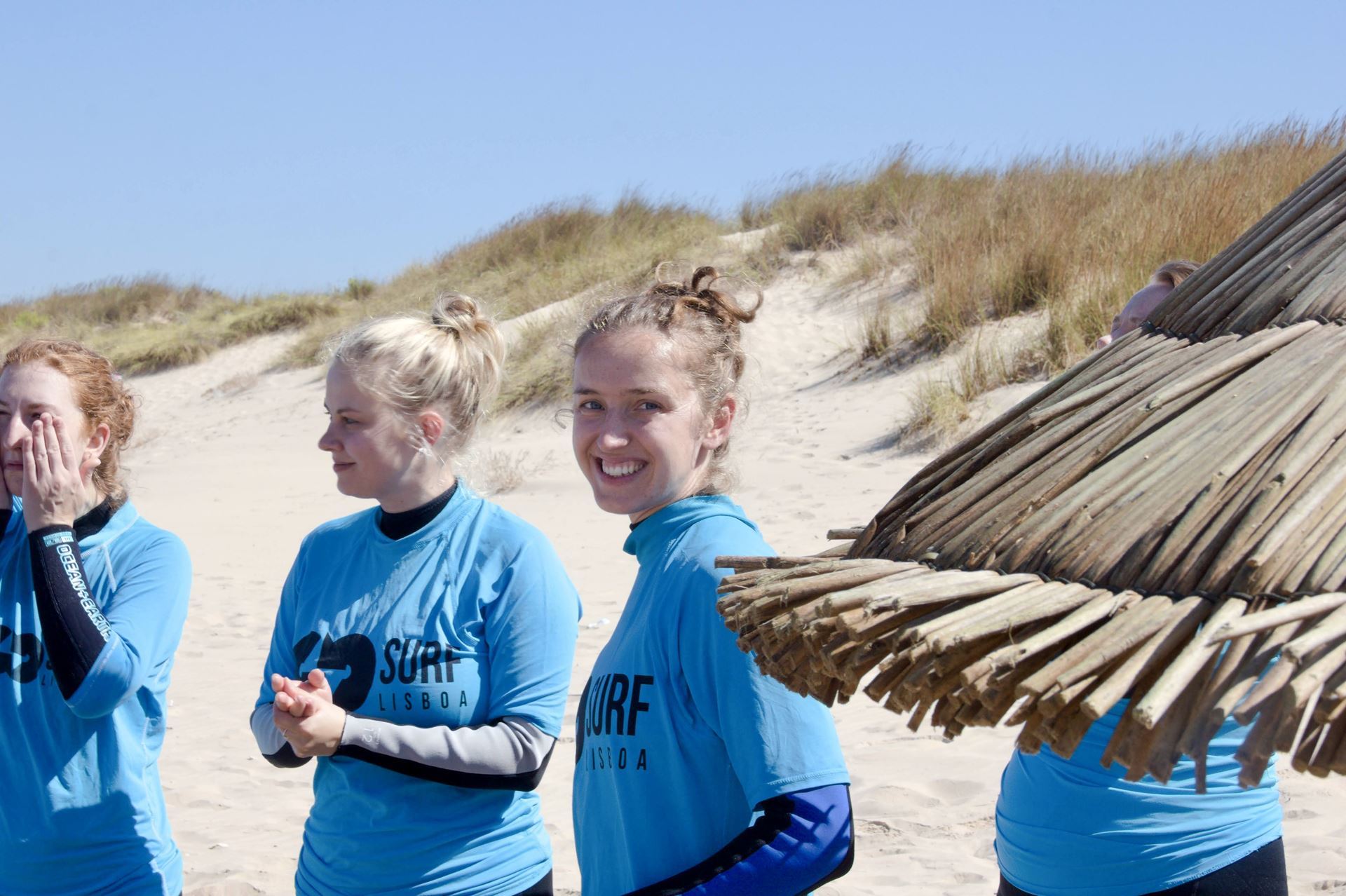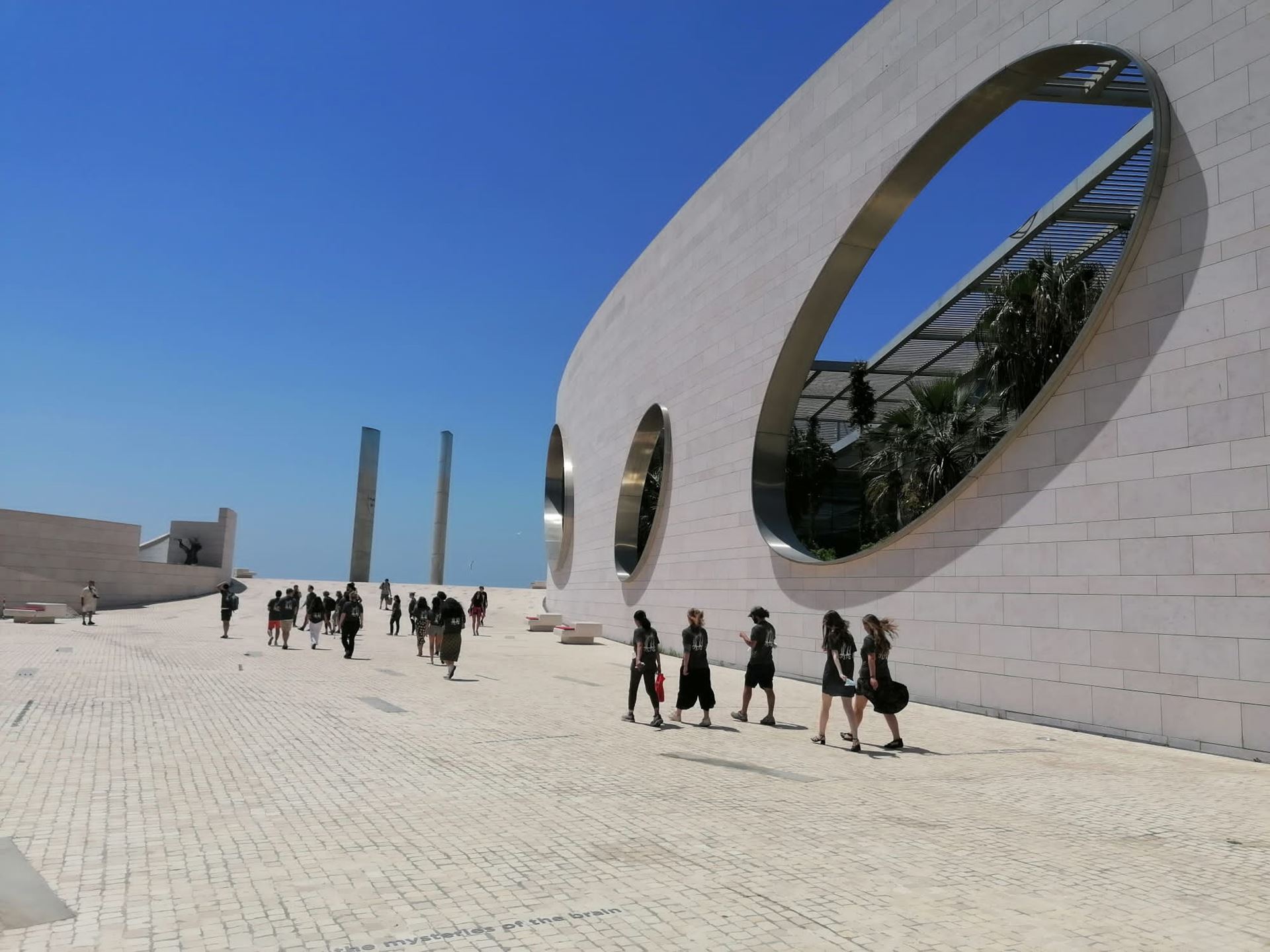a report by Ceca Kraisnikovic (Graz University of Technology)
“Patience, patience, patience!” – a rule that you remind yourself not only when you think about the progress made during your PhD, but, in times of the pandemic, also for in-person events crucial to feel that you are part of the research scientific community. Planned for 2020, the Cajal Summer School in Computational Neuroscience could resume only in 2022, and finally welcomed twenty-four participants from different research labs (and countries!), at the Champalimaud Center for the Unknown in Lisbon, Portugal, and during three weeks of wonderful summer weather, July 17 - August 6, 2022.
Let the summer (school) adventure begin!
Bom dia, Lisboa! Our advanced training course could start by getting to know each other. Through the quest to match each participant’s project with their name, a friendly atmosphere was established immediately. “Spiking networks on a chip propping up a sinking ship”, the phrase indicating my work on spiking neural networks and their possible use on neuromorphic hardware, put a smile on my face, and we thanked Joe Paton, one of the course directors, for creative descriptions and a pleasant start.
The scientific part of the summer school
The first week started with great lecturers Maté Lengyel, Srdjan Ostojic, Christian Machens, Tim Vogels, and Brent Doiron. Their lectures were followed by exercises that we were challenged to solve. We gave our best, but for some tasks, the hints and help from our dear tutors – Dylan Festa, Francesca Mastrogiuseppe, Carlos Stein, and Janaki Sheth – were very appreciated.
Already in the first week, we learned about the mechanisms of neuronal variability and what effects different noise levels can have on neuronal population firing rates; balance in neural networks and that E and I populations of neurons play a “push-and-pull” game. We implemented a noisy leaky integrate and fire neuron model, and made a large population of uncoupled neurons encode a common time-varying signal given to all neurons as input. To learn about neural data analysis, we used spike data from an experiment with monkeys performing a working memory task in which they had to distinguish whether a stimulus frequency f1 is greater than stimulus frequency f2. We generated Peri-Stimulus Time Histograms and reproduced a few figures from the original paper; we learned that one can use Principal Component Analysis on neural activity exhibiting mixed selectivity to obtain demixed selectivity, subsequently reconstruct full neural activity and get neural representations that are easier to further investigate and interpret. We also studied neural network models as dynamic systems, and how the dynamics of neural networks lead to computations. We simulated a trial of a working memory experiment in which a single neuron could remember a previously presented stimulus through persistent firing.
In the second and third weeks we got to hear also about the experimental work and the approaches to model different phenomena, and, in addition, to work on projects that aimed to deepen our knowledge of a specific topic of our interest. The choice was rather a challenge given that there were many excellent project proposals and possible research directions. My project work considered a minimal recurrent neural network model with restricted connectivity and we investigated its activity in detail via mathematical analysis. We also trained this model via gradient-based methods and reverse-engineered the obtained network. At the end of the project work, we were able to understand the model’s dynamic strategy to solve the task, hence the neural network model was not a “black box” for us anymore.
The social part of the summer school
We had a great time not only in the classroom but also outside, during many walks, dinners, gatherings. An amazing boat tour on the river Tejo, with a dinner and party, gave us hard time getting up on time the next day, but frequent coffee breaks made it possible to still follow the talks and productively work on our projects. We also had an opportunity to challenge ourselves in surfing, testing how fast our motor cortex can learn. It was certainly great fun!
This summary is definitely too short to describe all the content and our personal experiences during three wonderful weeks at the Champalimaud research center. I was really fascinated by everything we experienced there, both in terms of knowledge and the ways we socialized. A very remarkable summer school, and I highly recommend this (and all other) Cajal summer schools to all neuroscience PhD students!
Additional information about the summer school can be found here: https://cajal-training.org/on-site/ccn2022/
Lastly, many thanks to…
Course directors (Brent, Joe, Julijana, Maria) and tutors (Francesca, Dylan, Carlos, Janaki) for their advising and time spent with us; course organizers Teresa and Joana, for being there for any request and wish from our side; course presenters, for presenting their admirable research; course participants, for a great time, fun, deep conversations, invitations for going out; my hotel-roommate Johanna Frost Nylen, for the conversations about science, research, life, society, culture, ocean, Sweden;
mentor Robert Legenstein, for his supervision and patience; professor Wolfgang Maass, for earlier supervision and supporting my application; secretary Daniela Windisch-Scharler, for having an answer/solution for any bureaucracy issue; my research lab, Institute for Theoretical Computer Science (IGI), TU Graz, for making this summer school attendance possible; and Austrian Neuroscience Association (ANA), for partial financial support and promotion of science and research.
Ceca Kraisnikovic
Graz University of Technology
Graz, Austria


